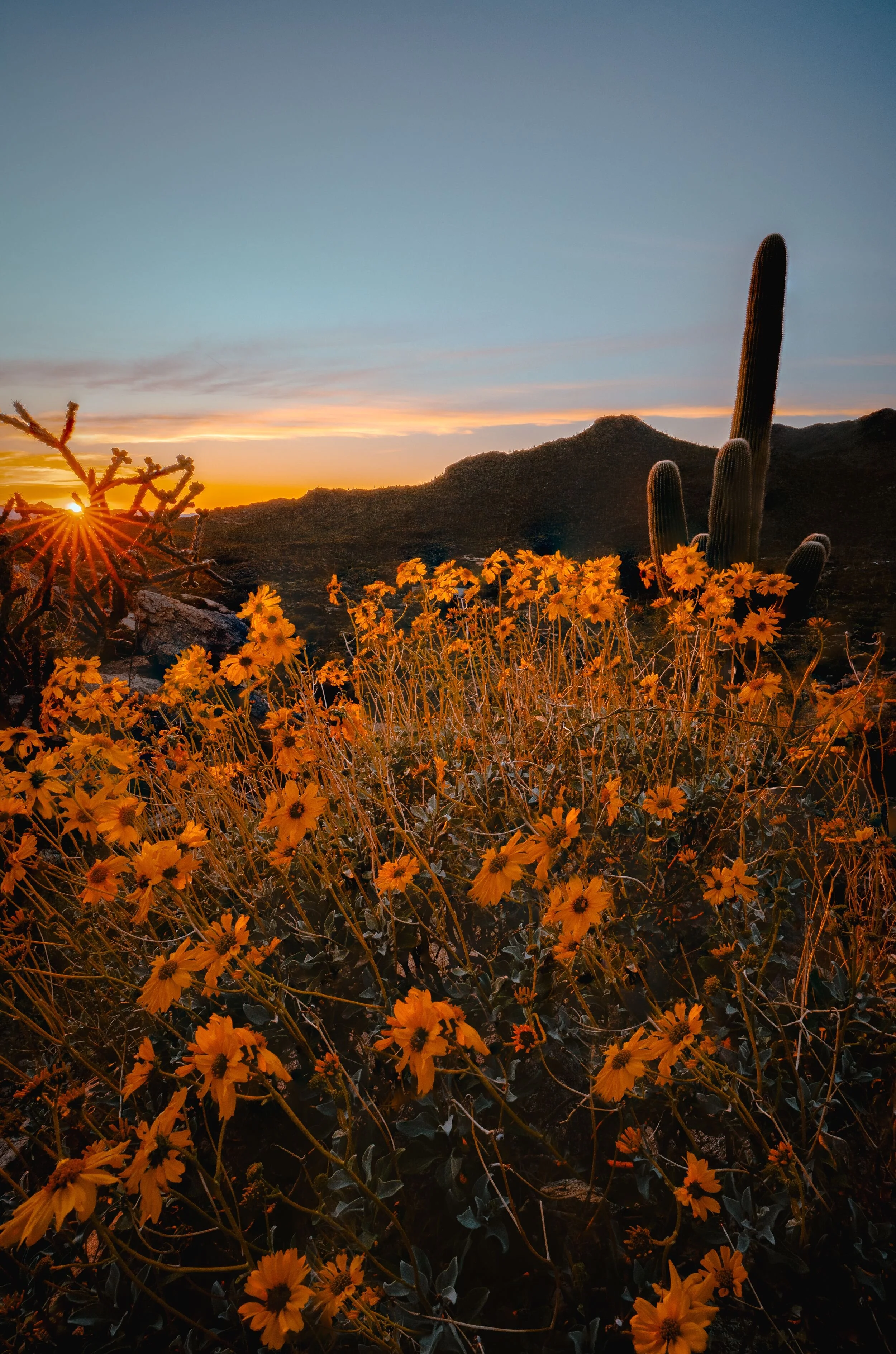No matter if you’re building a home or sprucing up your current one, figuring out the landscaping is an important (and exciting) step. Our real estate development has the tips you need to set up brilliant landscaping for your Arizona desert home.
But first, what kinds of plants live in the desert?
All kinds of plants live in the desert. It’s hard to lump them all together because there are actually five different types of deserts. The Sonoran Desert is unique because it’s a subtropical desert that gets the most rainfall (10 to 12 inches per year). In just the Sonoran Desert — where Tucson is — there are about 2,000 plant species.
For any native Arizonan who initially scoffed at this question, we get it. But sometimes we take the incredible diversity here for granted. The takeaway for desert plant life: there are countless different types of plants, but what they all have in common is their ability to thrive with very little water.
What types of cacti live in Arizona?
There are over 60 species of Arizona desert cactus plants. For your Saguaro Ranch home, below are some of the most common:
Saguaro
Our namesake! Saguaros (sa-war-ohs) are only found in the Sonoran Desert, making them a very special and rare cactus, but thanks to the regulations Arizona has in place, they’re not endangered. A saguaro can live upwards of 200 years and grow very slowly — if you see one that’s only 1.5 inches tall, it’s probably about 10 years old.
If you’re hoping for breathtaking blooms, know that saguaros bloom a little differently than other cacti. Their flowers bloom for less than 24 hours, opening at night. Saguaros also produce fruit that is edible.
Cholla
There are many different species of cholla (choy-ya) cacti in the Tucson area — you can see some of the varieties right here at our real estate development. Some varieties can grow up to 12 feet tall or more. Good to keep in mind when deciding on landscaping plants: if you’re expecting a simple shrub-type cacti, the cholla can get a whole lot bigger.
Hedgehog
Another general name for a cactus with many different species, hedgehog cacti are known for their gorgeous blooms. Hedgehog cacti are great Arizona landscaping plants and will make your home look spectacular come springtime.
Barrel
Barrel cacti are mesmerizing to behold. The amazing circles of needles make you feel like nature has its moments of sheer perfection. When barrel cacti bloom, the flowers form a circle at the top like a crown!
Prickly Pear
No cacti list would be complete without the prickly pear. You can pick the fruit they produce when it’s ripe, starting around July, and use them to make iconically bright purple syrups, jams, or jellies. Prickly pears do best on rocky hillsides and around boulders, or where the soil is sandy or contains gravel.
Arizona desert plants list — not cacti
Don’t let the rough edges or even spines fool you: there are lots of other, non-cactus Arizona desert plants that are also great for landscaping.
Ocotillo
Ocotillo (oh-co-tee-yo) plants are semi-succulents, but they’re not cacti. They’re actually more closely related to blueberries! This desert plant has long been revered for its purported medicinal properties. Indigenous peoples would use the flowers or roots for wounds and other purposes. One thing to note when planning landscaping, ocotillo can grow up to 20 feet.
Desert Honeysuckle
This full-sun shrub can reach 4 to 5 feet in size, with blooms that are of particular interest for hummingbirds. If you’re looking to provide bees and hummingbirds a nice spot to land, desert honeysuckle is a great bet for landscaping. You can plant desert honeysuckle in any season in the Sonoran Desert.
Desert Marigold
Desert marigolds have bright floral blooms that perhaps look the most similar to flowers found outside of the Sonoran Desert. They’re typically 1 to 2 feet tall and 2 feet wide, making them a great landscaping plant for homes with not a ton of space (or who want to supplement a smaller space with a filler plant). This likely won’t be a problem, but it’s good to know that desert marigold are poisonous to sheep and goats.
Like we mentioned, there are thousands of plants in the Sonoran Desert and our real estate development couldn’t possibly cover them all. But when thinking about landscaping, we hope this gives you a good head start! In need of more ideas? Schedule a driving tour to Saguaro Ranch to see how our Arizona real estate development is working with the land to create a one-of-a-kind, uniquely preserved and pristine community. We look forward to seeing you!





